Issue #1: The New York City Property Tax System Discriminates Against Residents of Majority Minority Neighborhoods
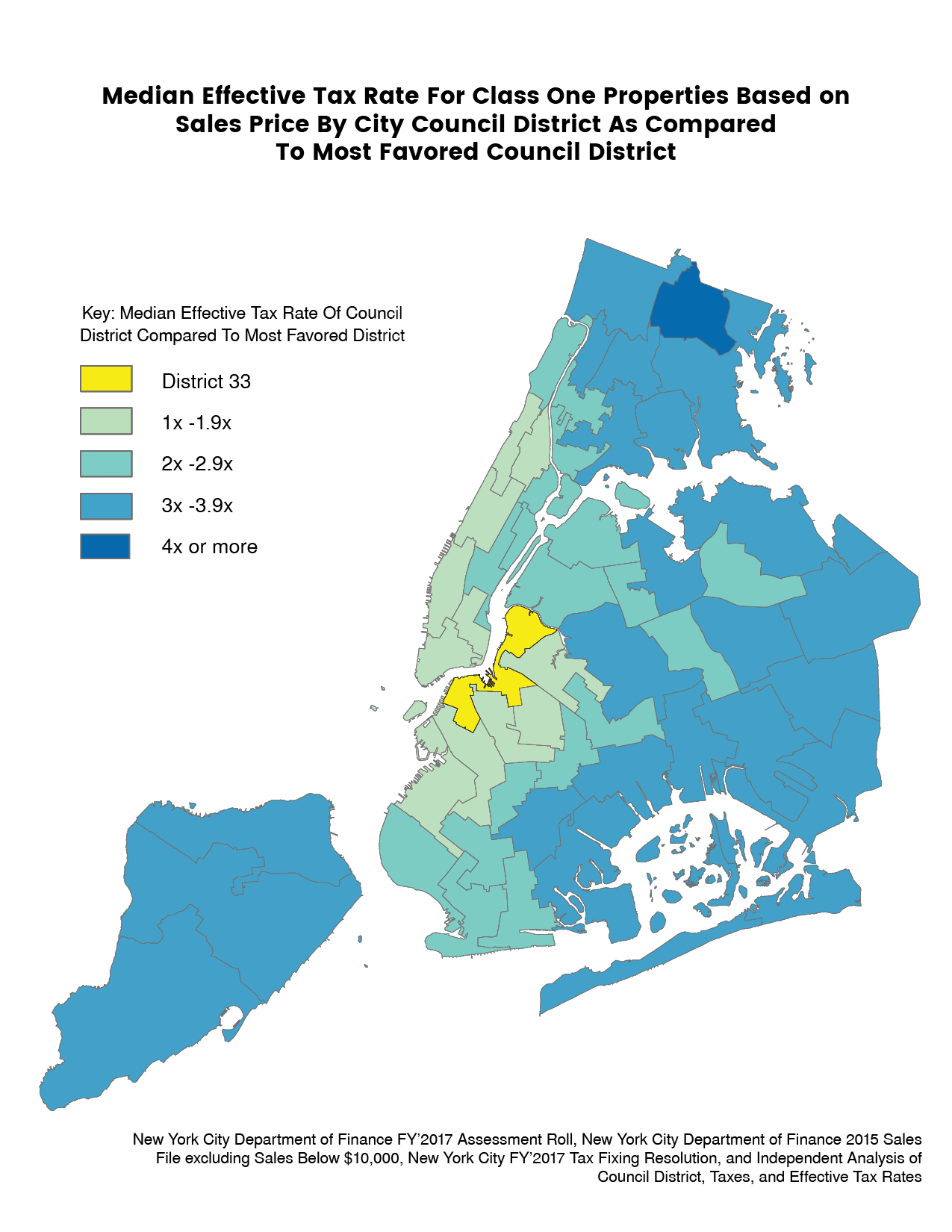
Figure 1.1: The majority of New York’s tax class one properties pay significantly more on average than those located in New York City Council District 33, which includes the neighborhoods Brooklyn Heights, DUMBO, Williamsburg, Greenpoint, Boerum Hill, Vinegar Hill, Downtown Brooklyn, and Bedford-Stuyvesant (New York City Department of Finance FY 2017 Assessment Roll).
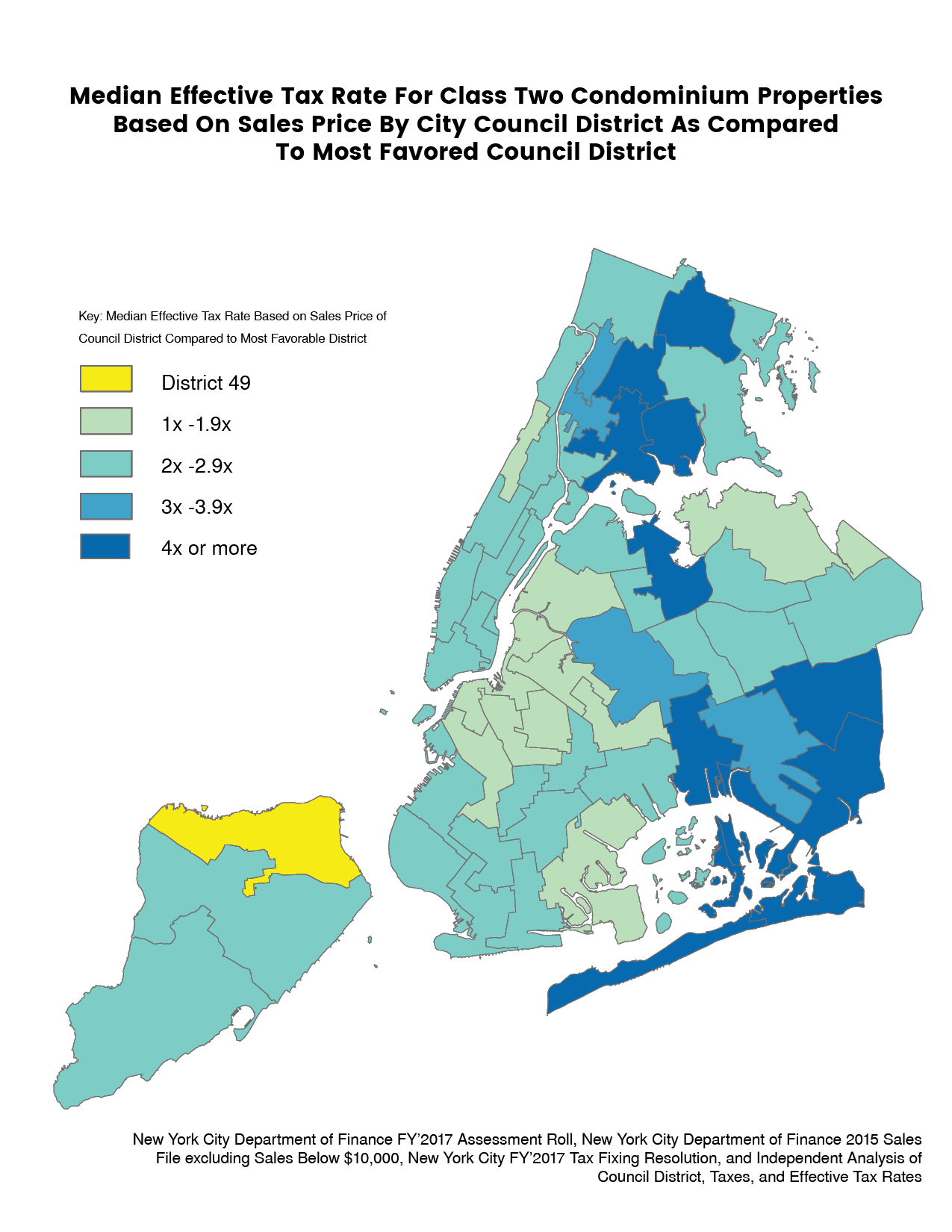
Figure 1.2: Many of New York’s condominium properties pay significantly more on average than those located in New York City Council District 49 in Staten Island which includes the neighborhoods St. George, Tompkinsville, Stapleton, Snug Harbor, Livingston, New Brighton, Randall Manor, West Brighton, Silver Lake, Clove Lakes, Clifton, Concord, Rosebank, Port Richmond, Elm Park, and Mariners Harbor (New York City Department of Finance FY 2017 Assessment Roll).
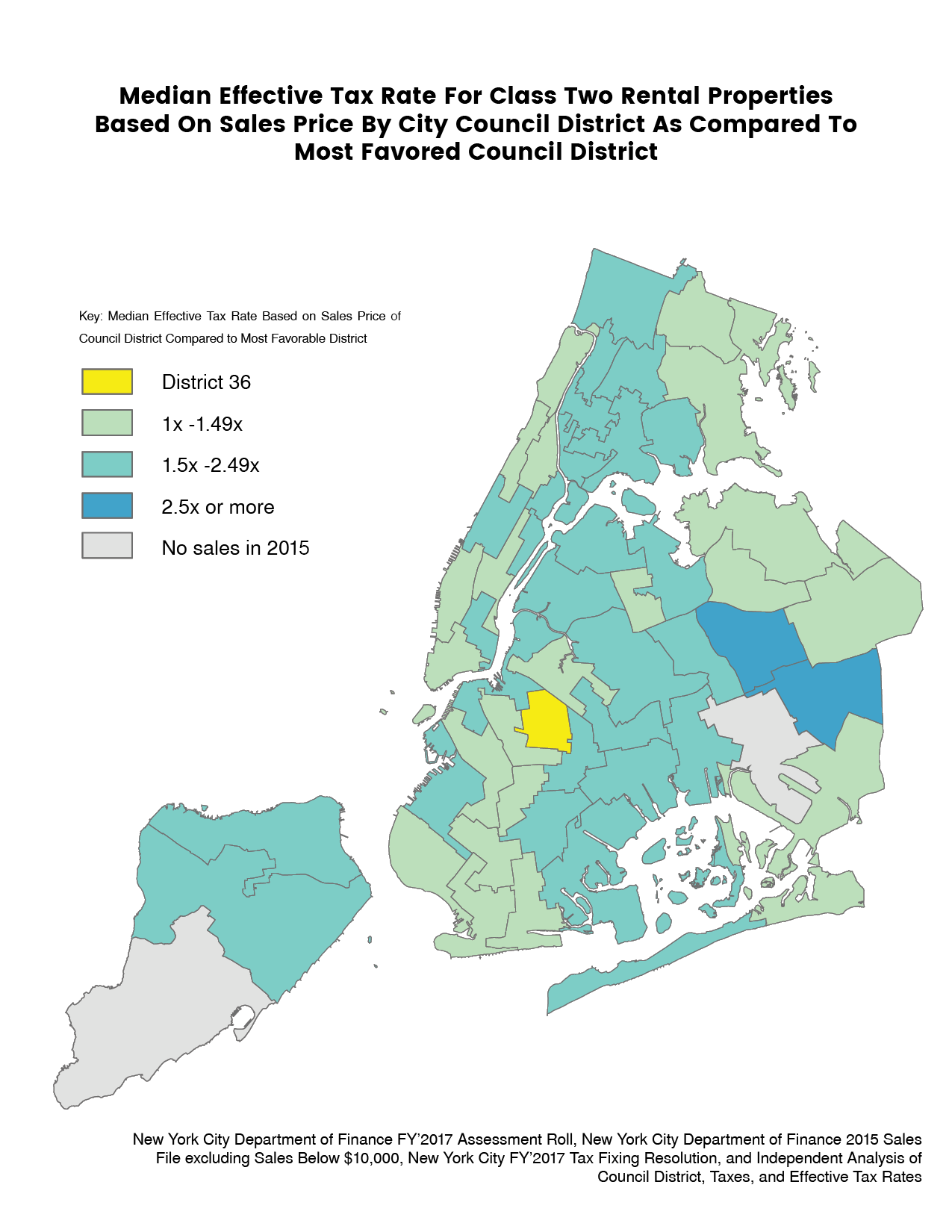
Figure 1.3: Many of New York’s condominium properties pay significantly more on average than those located in New York City Council District 49, which includes Bedford Stuyvesant and northern Crown Heights (New York City Department of Finance FY 2017 Assessment Roll).
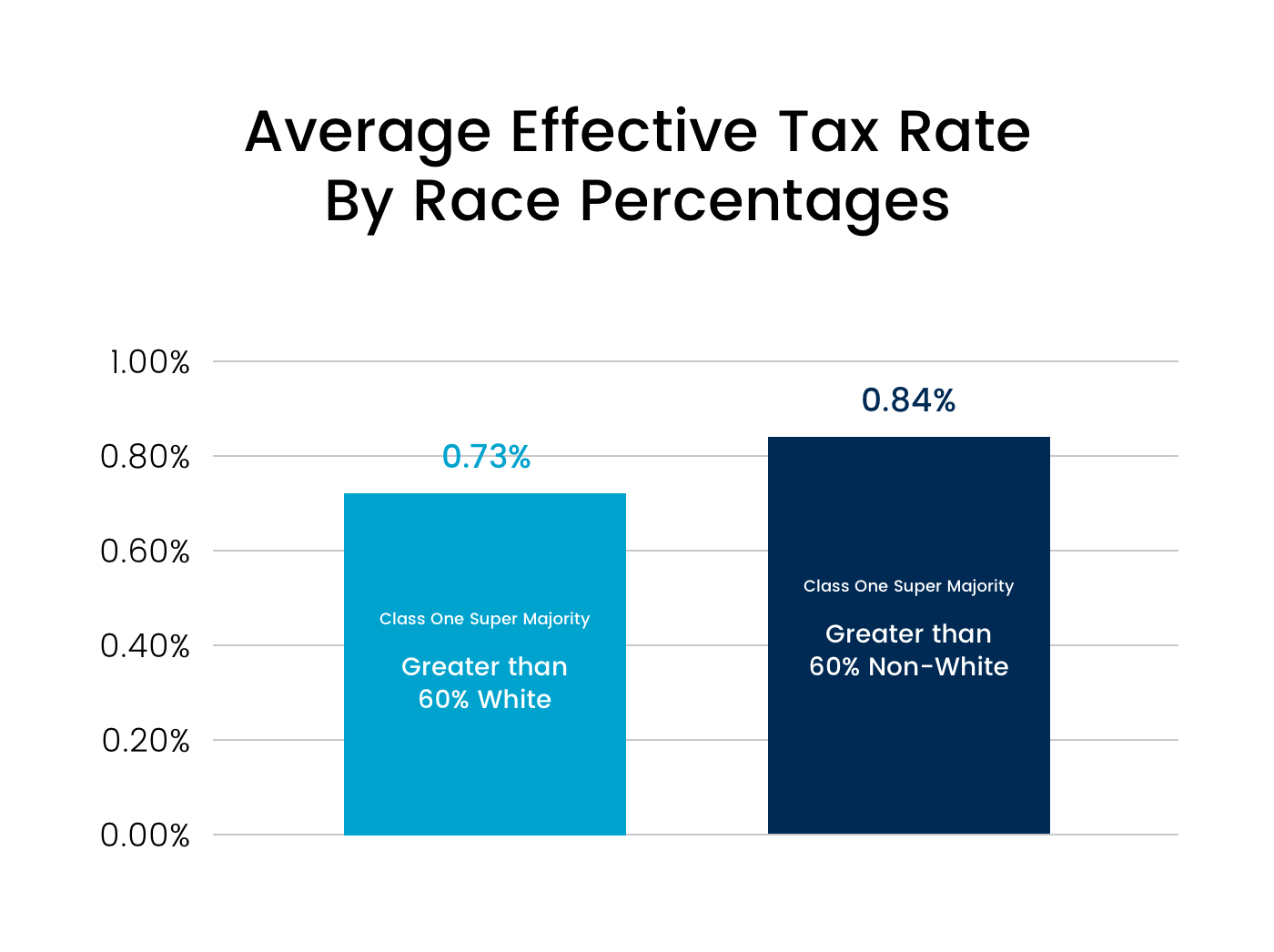 Figure 1.4: On average, neighborhoods with larger minority populations pay a higher effective tax rate (New York City Department of Finance FY 2017 Assessment Roll).
Figure 1.4: On average, neighborhoods with larger minority populations pay a higher effective tax rate (New York City Department of Finance FY 2017 Assessment Roll).
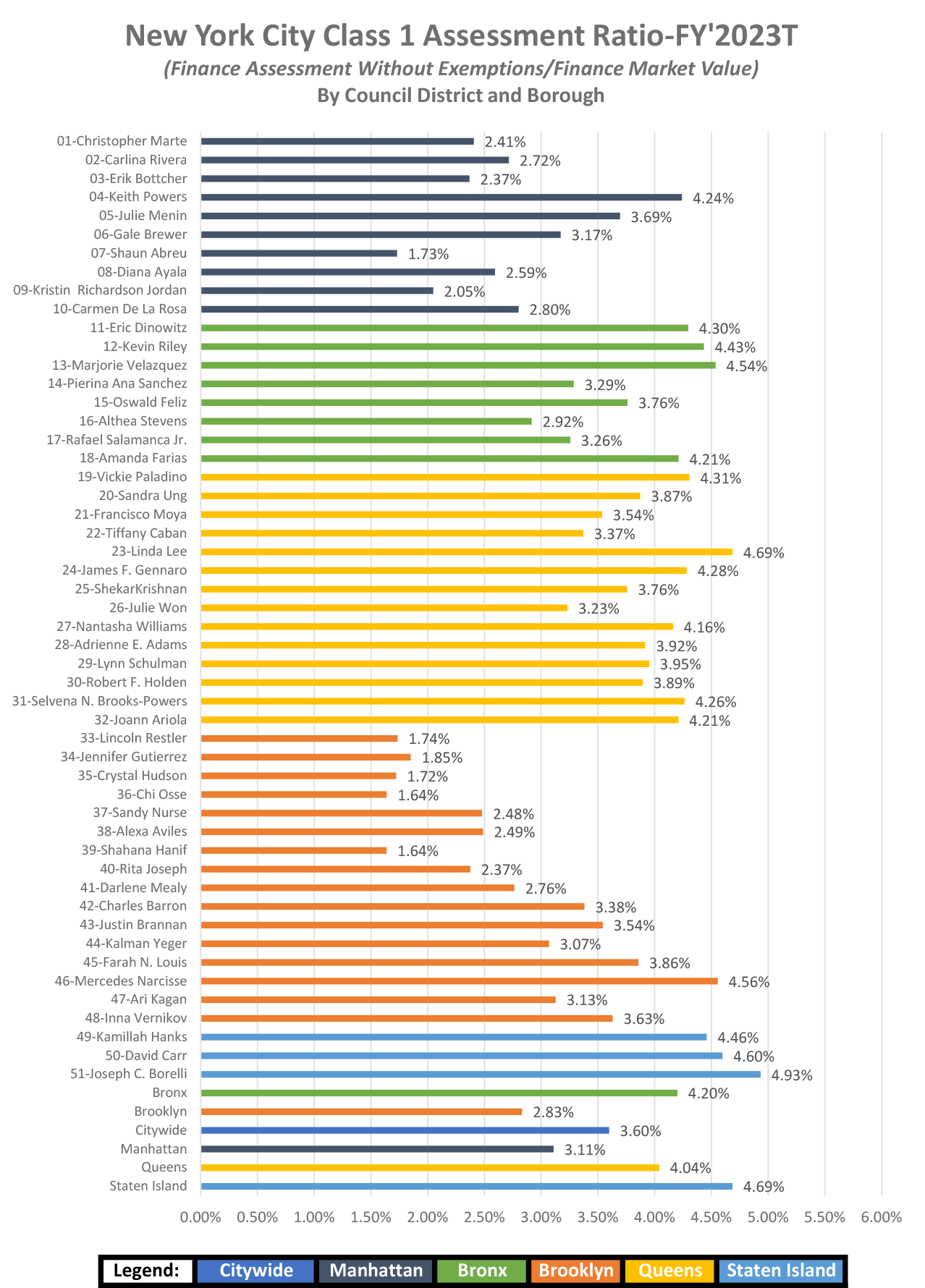
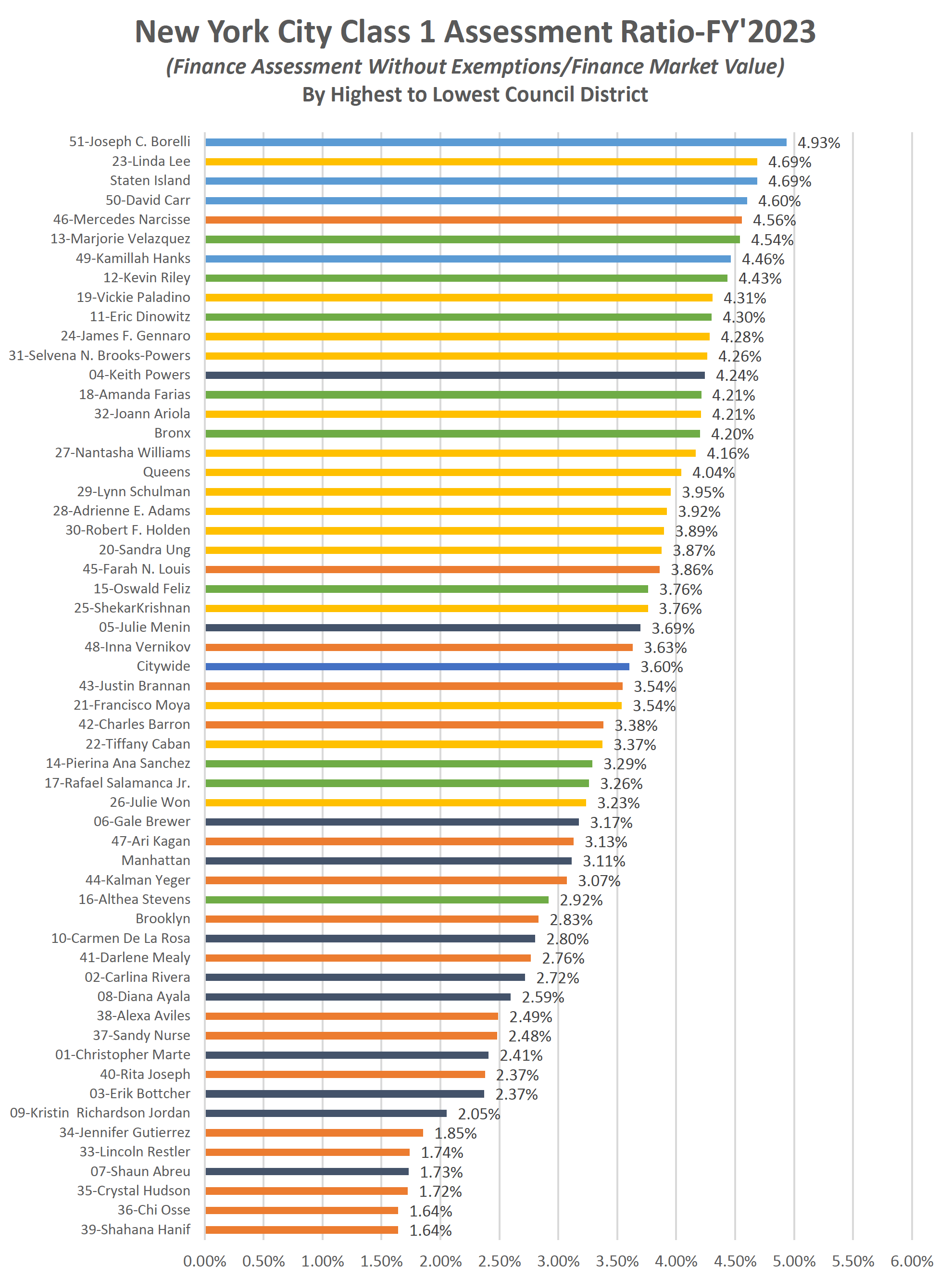
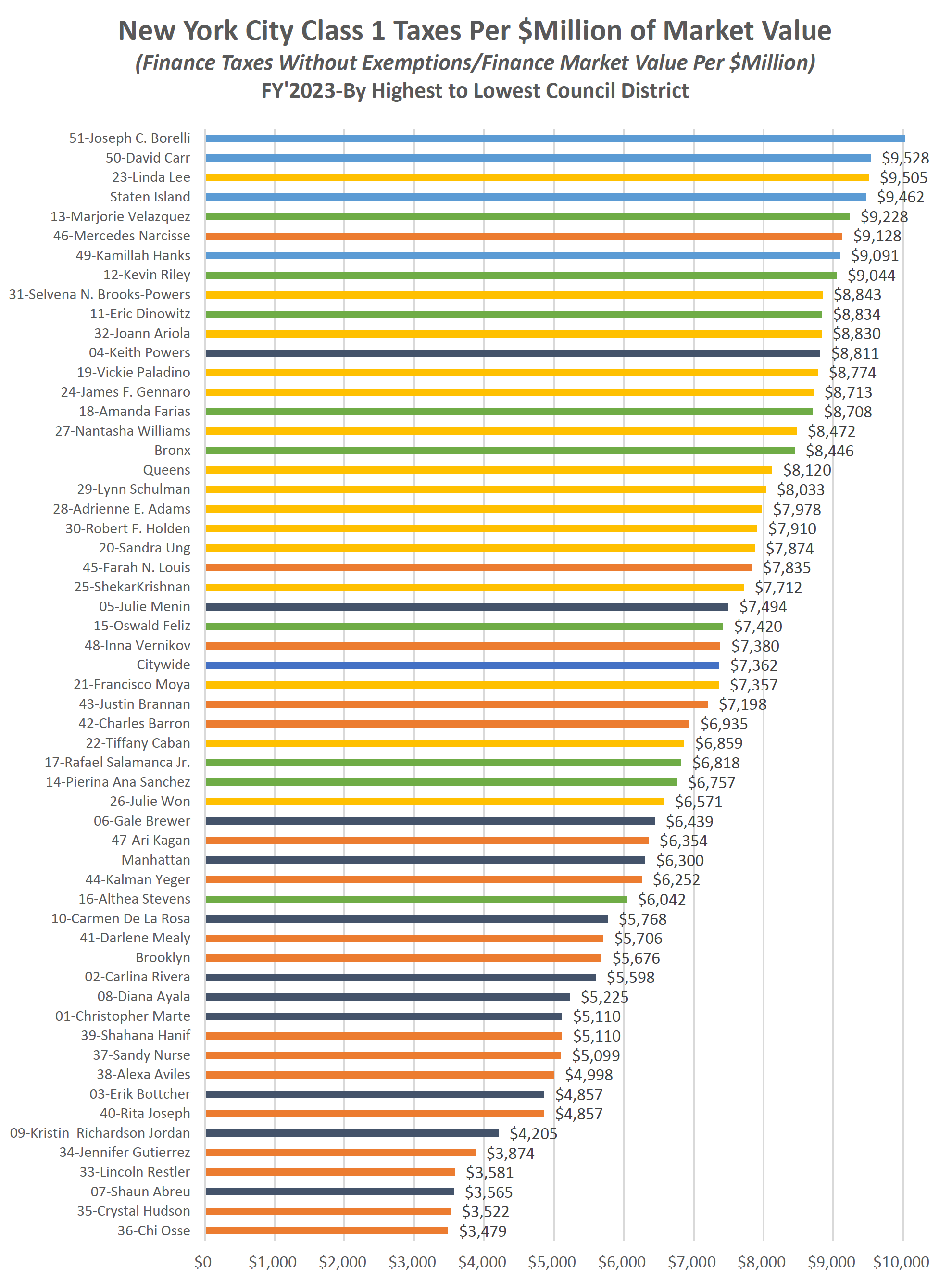
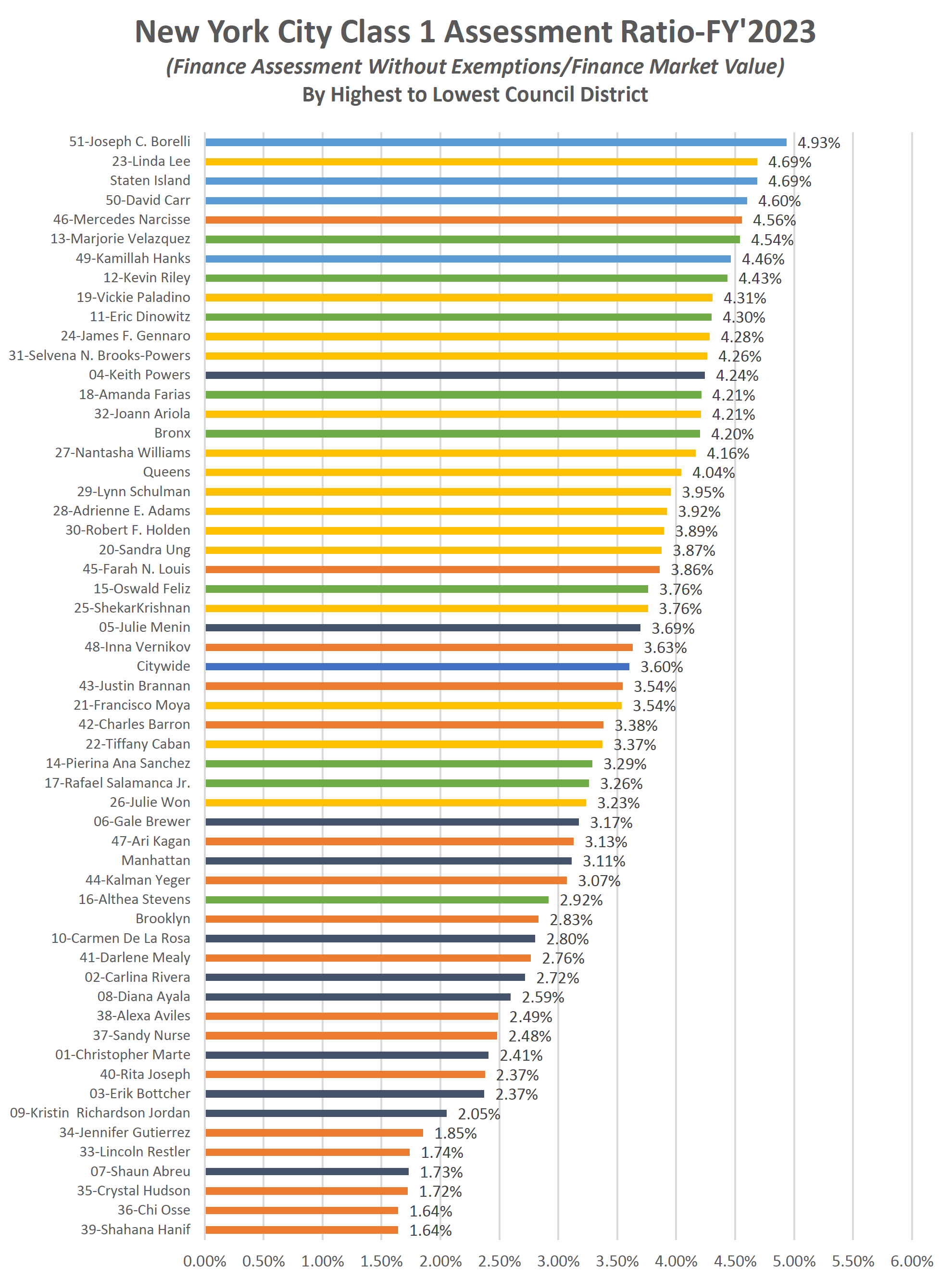
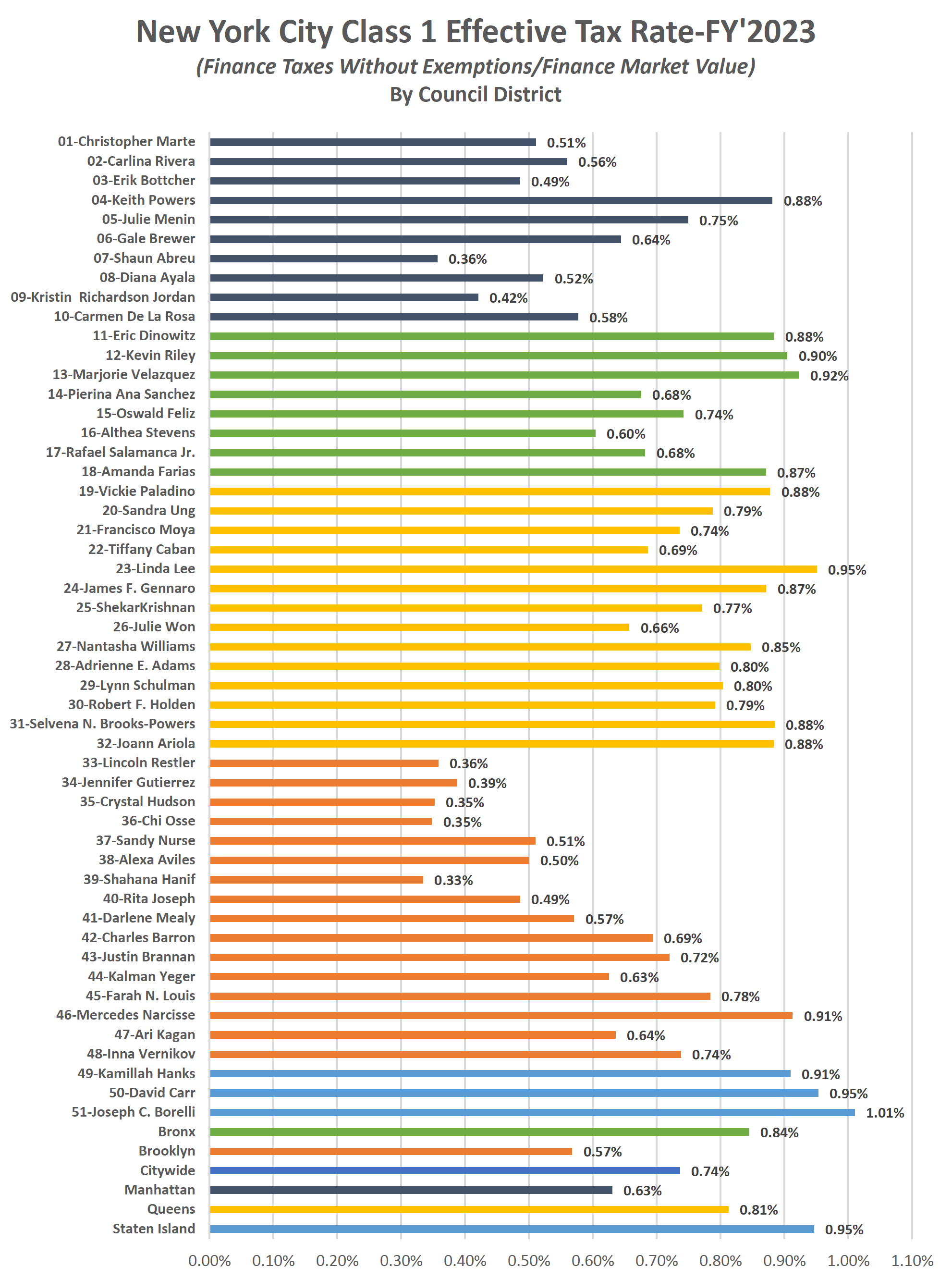
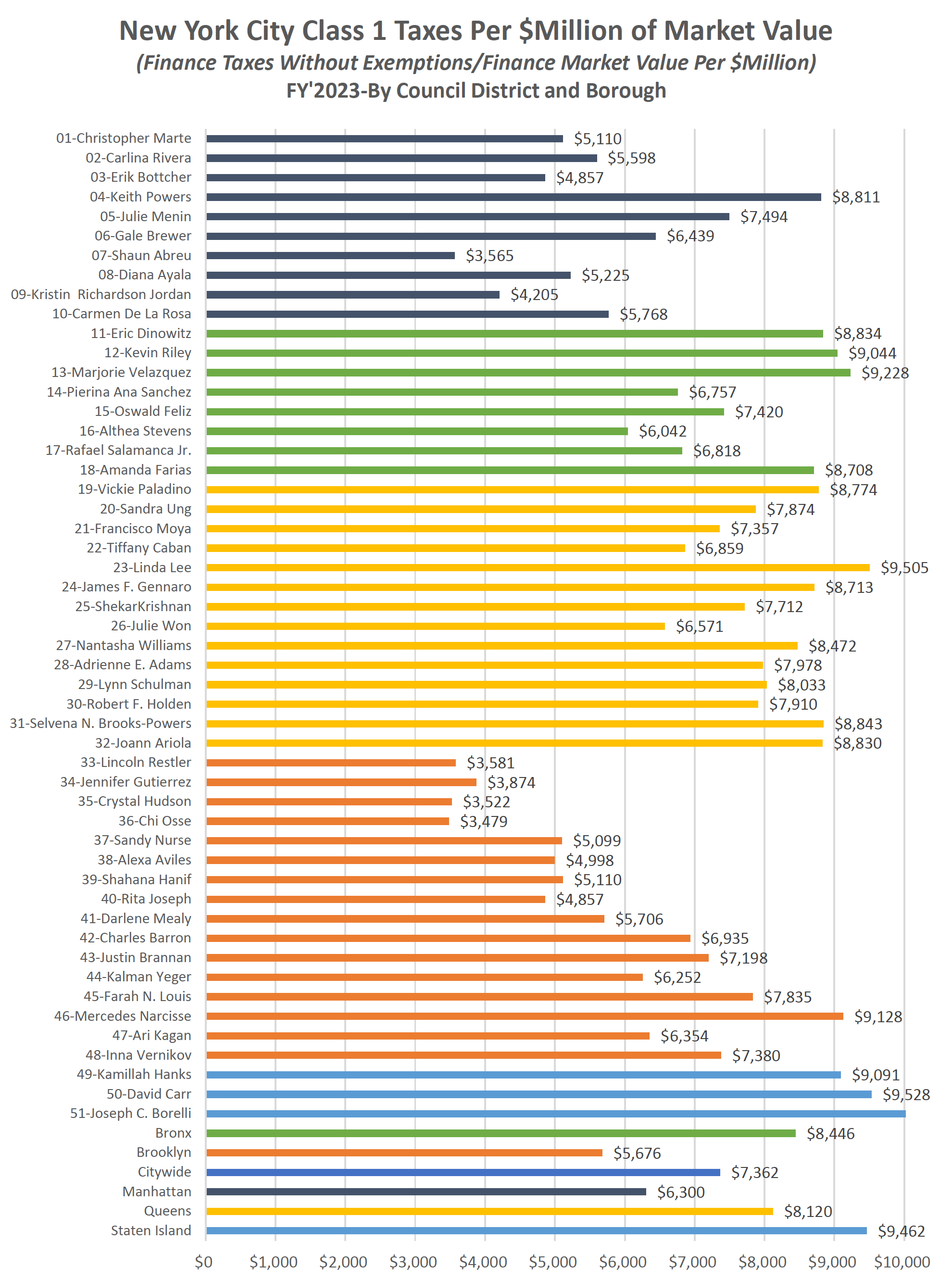
Figure 1.5: The average effective tax rate for Tax Class 1 properties varies greatly by City Council District. (New York City Department of Finance FY 2023 Assessment Roll).
Understanding the Consequences of a Discriminatory Property Tax System
The New York City tax system is geographically discriminatory and imposes higher effective tax rates on renters and homeowners in neighborhoods that are less affluent and contain larger concentrations of minority populations.
These widening systemic inequalities continue to penalize renters, business owners, homeowners in slower-appreciating neighborhoods, minorities, and various other New Yorkers who have been forced to carry an unfair share of the City’s tax burden compared to other property owners.
For the reasons set forth above, the property tax system systematically and disparately impacts racial minority homeowners, leading to over $1.7 billion per year of over-assessments in majority-minority and super-majority (over 60%) minority districts. Properties in community districts that are super-majority-white are assessed at only 3.95% of market value, and properties in community districts that are majority-minority are assessed at a 4.68% ratio, or 19% higher.
Economically, this means that the more than 446,000 homeowners in majority-minority community districts are being over-assessed by $1.7 billion a year compared to homeowners in majority-white districts and, as a result, pay $268 million more in taxes ($602/year for the average property owner) than they would if they were assessed at the same rate and paid the same effective tax rate as homeowners in majority-white districts.
“This over-assessment on poorer minority communities contributes to a higher rate of foreclosure and a higher incidence of illegal occupancies and rooming houses in said communities”. (Minorities Affected Most as New York Foreclosures Rise, New York Times, 2009)
Renters must bear this burden in large part due to NYC’s regressive property tax system.